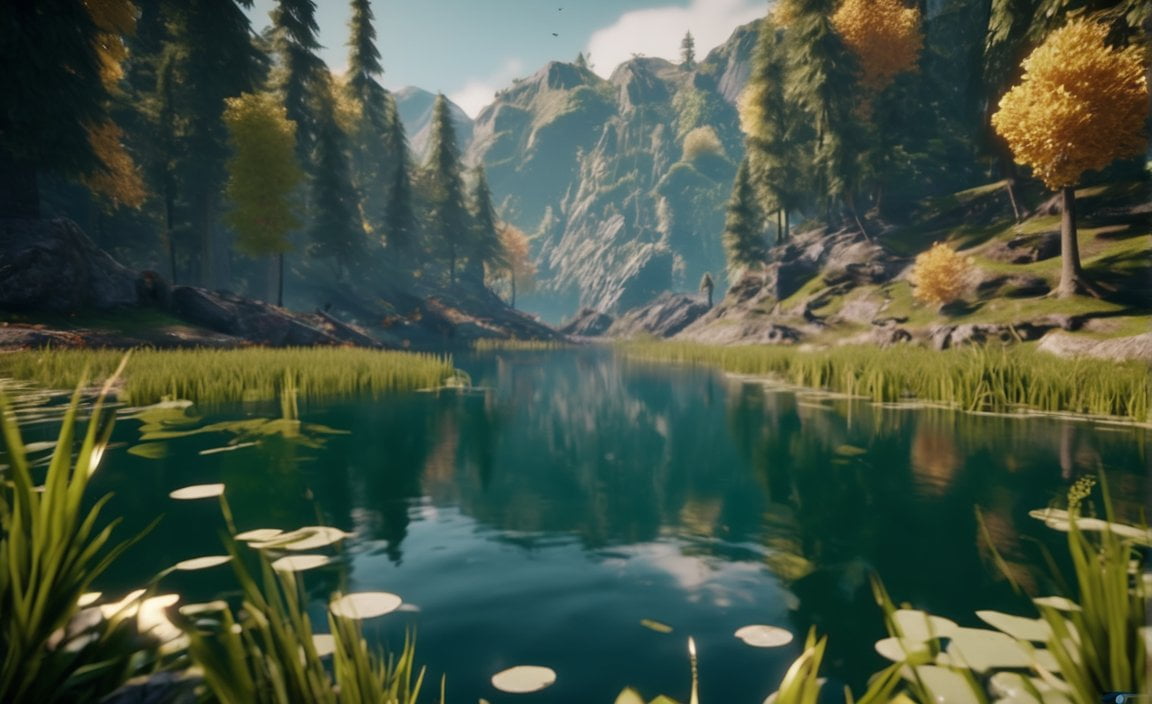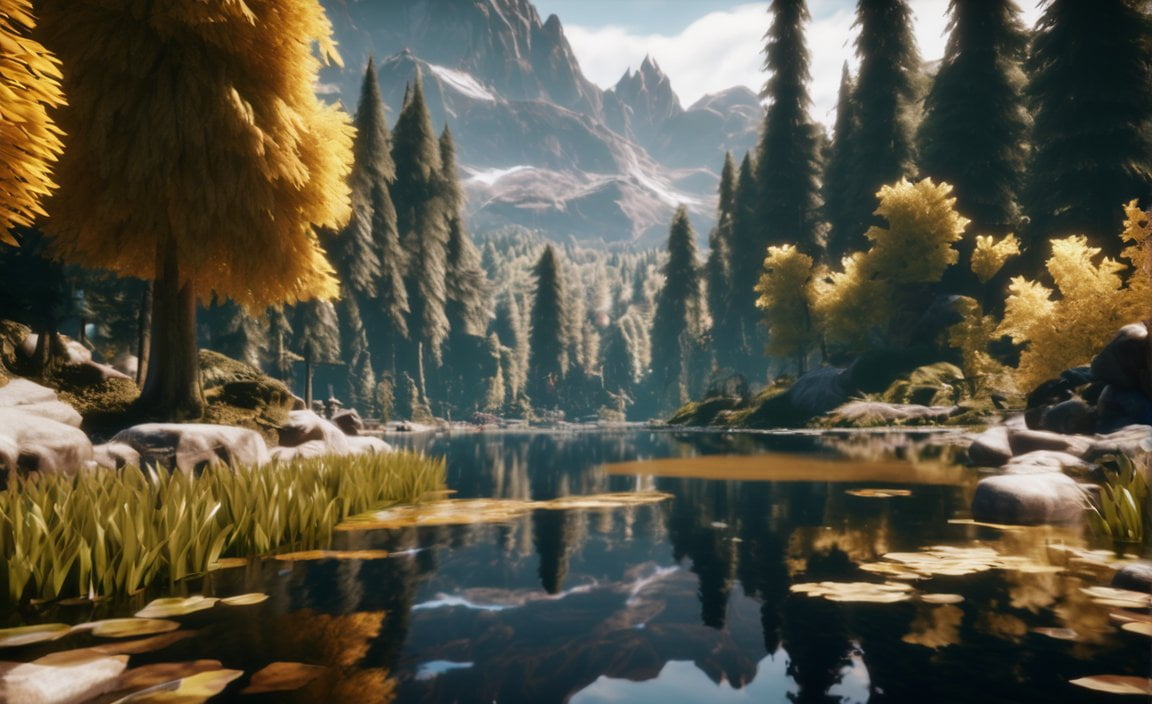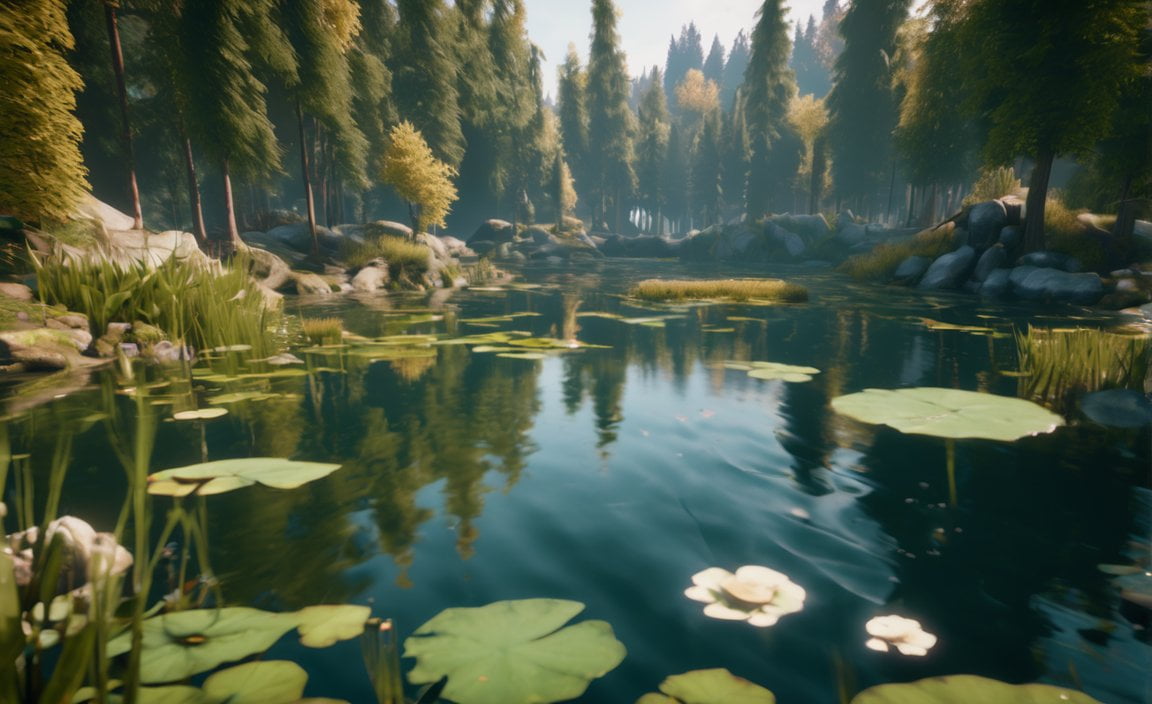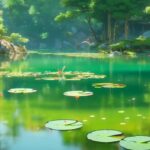Discover the ecological marvels that lie beneath the shimmering surface of lakes and ponds with our compilation of five fascinating facts. In this article, we delve into the hidden world of these aquatic wonders, uncovering their ecological importance and shedding light on the incredible lifeforms that call them home. Join us as we explore the secrets of lakes and ponds, unravelling their mysteries and showcasing the urgent need for their conservation. So, strap on your metaphorical scuba gear and prepare to be amazed by the awe-inspiring marvels that lie within these captivating bodies of water.

Key Takeaways:
- Lakes and ponds are isolated environments that support the evolution of unique animals and plants.
- Man-made lakes are called reservoirs.
- Lakes and ponds come in a wide range of sizes and shapes, from small to massive.
- There are no defined differences between lakes and ponds from a scientific standpoint.
- Endorheic lakes only lose water through evaporation or underground seepage.
- During summer, the water at the bottom of lakes is colder than the surface water.
- Ponds serve as safe habitats for wildlife.
- Ponds have historical significance.
- Sources: Easy Science for Kids, KonnectHQ
5 Facts About Lakes and Ponds
Lakes and ponds are not just beautiful bodies of water; they are also vital ecosystems that support a wide variety of plant and animal life. In this article, we will explore five fascinating facts about lakes and ponds that highlight their ecological marvels.
1. Lakes and Ponds: The Perfect Environment for Evolution
One of the most intriguing aspects of lakes and ponds is their ability to serve as isolated ecosystems. Due to their geographical isolation, lakes and ponds provide the perfect environment for unique species to evolve. These bodies of water act as natural barriers, creating specialized habitats that encourage the development of interesting animals and plants that are found nowhere else.
2. Reservoirs: Man-Made Water Wonderlands
Did you know that man-made lakes are referred to as reservoirs? These engineered water bodies serve a variety of purposes, such as water storage for irrigation, drinking water supply, and hydroelectric power generation. Reservoirs not only provide numerous benefits to society but also create recreational opportunities for activities such as boating, fishing, and swimming.
3. Lakes and Ponds: A World of Sizes and Shapes
From small ponds to vast lakes, these water bodies exhibit an incredible range in size and shape. Lakes can span over thousands of square kilometers, while ponds can be as small as just a few square meters. This diversity highlights the immense variability in these aquatic habitats and showcases their significant contribution to the planet’s biodiversity.
4. Lakes and Ponds: A Matter of Perspectives
There are no official or scientific differences between lakes and ponds. Their classification depends on subjective perspectives that consider factors such as size, depth, and surrounding vegetation. While one person might consider a particular body of water to be a lake, another might label it as a pond. The terms “lake” and “pond” are fluid and open to interpretation.
5. Endorheic Lakes: The Ultimate Water Economizers
Have you ever heard of endorheic lakes? These unique water bodies only lose water through evaporation, where water returns to the atmosphere, or underground seepage. Unlike other lakes, endorheic lakes do not drain into rivers or oceans, making them exceptional water economizers. The iconic Great Salt Lake in Utah, USA, is one prominent example of an endorheic lake.
Lakes and ponds are not only fascinating from a scientific standpoint but also play a vital role in supporting various forms of life. These aquatic marvels are not just bodies of water; they are dynamic ecosystems that deserve our attention and conservation efforts. So, the next time you encounter a lake or a pond, take a moment to appreciate the wonders that lie within its depths.
Here are some interesting facts about various topics you might be interested in:
5 facts about animal welfare: Did you know that animal welfare is not just about house pets? Discover some intriguing facts about the different aspects of animal welfare that will surely make you think twice about our interactions with animals.
5 facts about common snapping turtle: Have you ever encountered a common snapping turtle? Learn some fascinating facts about these incredible reptiles and see why they are such unique creatures in the animal kingdom.
5 facts about Indus Valley civilization: Step back in time and explore the wonders of the Indus Valley civilization. Uncover surprising facts about one of the world’s oldest civilizations and gain a deeper understanding of its impressive achievements.
5 facts about marine animals: Dive into the captivating world of marine animals. From majestic whales to colorful coral reefs, discover remarkable facts about these fascinating creatures that call the ocean their home.
Simply click on the links above to explore each topic and expand your knowledge!
Lakes and Ponds Can Vary Greatly in Size and Depth
As bodies of water, lakes and ponds offer unique ecosystems, showcasing the wonders of nature. Their distinct characteristics, such as size and depth, contribute to their ecological importance and the abundance of life that thrives within their depths. Join me as we uncover five fascinating facts about lakes and ponds that will deepen your understanding of these captivating water bodies.
Fact 1: Size Matters
Lakes and ponds can vary greatly in size, ranging from small backyard ponds to vast lakes that span hundreds of square kilometers. For example, Lake Superior, the largest freshwater lake in the world, covers a staggering surface area of more than 82,000 square kilometers. In contrast, some ponds can be as small as just a few square meters. The diversity in size creates unique habitats for a wide range of plant and animal species.
Fact 2: Depths Upon Depths
When it comes to depth, lakes and ponds also showcase significant variations. Lakes, with their larger surface areas, can have depths that extend to hundreds of meters. Take Lake Baikal in Siberia, for instance, which boasts a maximum depth of over 1,600 meters. On the other hand, ponds are generally shallower, with depths usually ranging from a few centimeters to a maximum of around 1.8 meters. These differences in depth contribute to the distinct characteristics of the species that call these water bodies their home.
Fact 3: Aquatic Biodiversity Galore
The varying sizes and depths of lakes and ponds provide unique niches for a diverse range of plant and animal species. [Lakes and ponds can vary greatly in size and depth], allowing for a wide array of environmental conditions that support a rich abundance of life. Lakes, with their larger surface areas and deeper depths, often provide habitats for a greater variety of species. From delicate water lilies and vibrant fish to majestic waterfowl and elusive aquatic mammals, lakes and ponds are teeming with life.
Fact 4: Ecological Impact
The diverse ecological characteristics of lakes and ponds contribute to their immense significance. They not only provide essential habitats for aquatic life but also offer benefits to human communities. Lakes, due to their larger size and higher water storage capacity, serve as important sources of drinking water, irrigation for agricultural activities, and hubs for various recreational activities like fishing and boating. Ponds, although smaller, play vital roles in supporting local ecosystems, filtering water, and promoting biodiversity.
Fact 5: Constant Change
Lakes and ponds are dynamic systems, constantly changing and adapting to environmental conditions. Factors such as fluctuations in rainfall, temperature, and human intervention can impact their size, depth, and overall ecological balance. It is essential to understand and appreciate the delicate nature of these water bodies to ensure their conservation and long-term sustainability.
Key Takeaways:
- Lakes and ponds can vary greatly in size and depth, from small backyard ponds to vast lakes spanning thousands of square kilometers.
- Lakes often have larger surface areas and deeper depths compared to ponds.
- The size and depth of lakes and ponds contribute to their ecological impact and the diversity of plant and animal species they support.
- Lakes serve as crucial sources of drinking water, irrigation, and recreational activities for communities.
- Ponds play vital roles in local ecosystems, filtering water, and promoting biodiversity.
Suggested Sources:
– Lake vs. Pond: Exploring the Differences and Similarities
– Ponds vs. lakes… what’s the difference?
Human Activities and Their Impact on the Health of Lakes and Ponds
As we marvel at the beauty of lakes and ponds, it’s crucial to recognize the impact that human activities can have on these delicate ecosystems. Our actions can significantly affect the health and sustainability of these freshwater systems, causing environmental issues that threaten their ecological balance. Let’s explore five key facts about the impacts of human activities on lakes and ponds.
1. Increased Nutrient Load, Contamination, Acid Rain, and Invasion of Exotic Species
Human activities, such as agricultural runoff and wastewater discharge, contribute to the increased nutrient load in freshwater systems. This excessive nutrient input, known as eutrophication, poses significant challenges. It can result in algal blooms, oxygen depletion, and the decline of native species. Additionally, pollution from sources like acid rain and the introduction of invasive species further perpetuate the degradation of these ecosystems[^1].
2. Water Overuse and Depletion
The overuse of water by humans can have severe consequences for lakes and ponds. Excessive water extraction for irrigation, industrial use, and domestic consumption can lead to a reduction in available living space for aquatic populations. In some cases, it may even cause complete drying up of streams and ponds. Such water depletion threatens the habitats of various species and disrupts the delicate balance of these ecosystems[^2].
3. Creation of Dams and Water-Diversion Systems
The construction of dams and water-diversion systems has unintended consequences for lakes and ponds. These infrastructure projects can block migration routes for fish and disrupt their habitats. Furthermore, altering the natural flow of water can result in changes in sediment distribution, water temperature, and overall ecosystem dynamics. These changes can have cascading effects on the health and sustainability of these freshwater systems[^3].
4. Water Withdrawal for Human Use
The withdrawal of water for human activities, such as agriculture, industry, and municipal supply, can have detrimental effects on lakes and ponds. Reduced water levels shrink and degrade aquatic habitats, affecting the reproduction, feeding, and overall survival of aquatic organisms. Managing water resources sustainably is essential to ensure the preservation of these vital ecosystems[^3].
5. Runoff from Agricultural and Urban Areas
Runoff from agricultural lands and urban areas carries pollutants such as fertilizers, pesticides, and chemicals that significantly degrade water quality in lakes and ponds. This contamination poses a threat to biodiversity and adversely affects the health of aquatic organisms. Preventing pollution and implementing effective management strategies are essential to safeguard these fragile ecosystems[^3].
These facts underscore the urgent need for sustainable management practices and conservation efforts to protect the health and ecological integrity of lakes and ponds. By understanding the consequences of human activities, we can work towards mitigating further harm and ensuring the long-term well-being of these invaluable freshwater systems.
Key Takeaways:
- Human activities, including agricultural runoff and wastewater discharge, contribute to eutrophication, algal blooms, and the decline of native species in lakes and ponds.
- Excessive water extraction for irrigation, industrial use, and domestic consumption can reduce available living space for aquatic populations.
- The construction of dams and water-diversion systems disrupts migration routes and alters ecosystem dynamics in lakes and ponds.
- Water withdrawal for human use shrinks and degrades aquatic habitats, impacting the reproduction and survival of aquatic organisms.
- Runoff from agricultural and urban areas carries pollutants that degrade water quality, harming biodiversity and aquatic organisms.
Sources:
– Environmental issues in lakes and ponds: current state and [^1]
– Freshwater Threats and Species [^3]
Lakes and Ponds: Exploring the Wonders and Recreational Opportunities
As we immerse ourselves in the beauty of nature, lakes and ponds offer a splendid escape. These captivating water bodies not only provide picturesque landscapes but also serve as vital ecosystems that support a myriad of life. In this article, we will delve into the fascinating world of lakes and ponds, uncovering five intriguing facts that will ignite your curiosity and deepen your appreciation for these remarkable natural wonders.
Fact 1: Distinct Features and Origins
Lakes and ponds may seem similar, but they actually have distinctive characteristics. Ponds are defined as lentic water bodies, while lakes have specific criteria that differentiate them from ponds[^1^]. The formation of ponds can occur through various processes, such as glacial or volcanic activity, and they can even be man-made[^1^].
Fact 2: Biodiversity and Unseen Life
Prepare to be amazed by the stunning array of life that thrives within ponds. These aquatic ecosystems provide crucial habitats for numerous wildlife species, including fish, amphibians, insects, and birds[^1^]. Even small ponds can support a diverse range of plant and animal species, as each drop of water contains a microcosm of life[^2^]. Ponds are home to many rare species that have specialized adaptations to this unique habitat[^2^].
Fact 3: Ever-Changing Nature
Lakes and ponds are not permanent features and are subject to change or disappearance over time[^1^]. Factors such as climate and water availability determine whether these water bodies remain permanent or temporary[^2^]. It’s a constant reminder of the dynamic nature of our environment and the need for conservation efforts to preserve these precious ecosystems.
Fact 4: Ecological Importance
Beyond their aesthetic appeal, lakes and ponds play a vital role in our planet’s health. They contribute to the cycling of carbon and play a role in mitigating climate change[^2^]. These aquatic habitats also act as a filter, promoting clean water and supporting biodiversity[^3^]. Oxygenation is crucial for maintaining a healthy pond ecosystem, while nutrients like nitrogen and phosphorus are essential for its balance and productivity[^2^][^3^].
Fact 5: Recreational Opportunities Abound
Now, let’s talk about the recreational opportunities that lakes and ponds offer. Lakes and ponds provide numerous recreational opportunities for people, making them popular destinations for fishing, swimming, boating, and even birdwatching[^1^]. The peaceful surroundings and tranquil waters create the perfect escape from the hustle and bustle of daily life, allowing us to reconnect with nature and find solace in its serenity.
Key Takeaways:
– Lakes and ponds have distinct features and origins, with ponds being lentic water bodies and lakes having specific criteria that differentiate them[^1^].
– Ponds support a rich biodiversity, housing various wildlife species and containing a microcosm of life in every drop of water[^1^][^2^].
– Lakes and ponds are not permanent features and can change or even disappear over time, highlighting the dynamic nature of these ecosystems[^1^][^2^].
– These water bodies play a vital role in the environment, contributing to carbon cycling, water filtration, and biodiversity support[^2^][^3^].
– Lakes and ponds provide numerous recreational opportunities for people, including fishing, swimming, boating, and birdwatching[^1^].
Sources:
[^1^]: Pond Informer
[^2^]: Pond Informer
[^3^]: Nature Education Knowledge

FAQ
Q1: What are some interesting facts about lakes and ponds?
A1: Some interesting facts about lakes and ponds include the variation in size and shape, the lack of scientific differences between the two, and the fact that lakes are often isolated places where unique animals and plants can evolve.
Q2: How do lakes and ponds differ from each other?
A2: Lakes and ponds differ in terms of size, depth, and volume. Lakes are larger bodies of water surrounded by land, while ponds are smaller and shallower. Lakes can support a greater diversity of organisms and have more water storage capacity compared to ponds.
Q3: What ecological benefits do lakes and ponds provide?
A3: Lakes and ponds provide important habitat for a variety of plant and animal species. They contribute to increased biodiversity, support aquatic wildlife, and can be used as sources of drinking water, irrigation, and recreational activities.
Q4: What are some human impacts on lakes and ponds?
A4: Human activities can have significant impacts on lakes and ponds, including increased nutrient load, contamination, water overuse, creation of dams and water-diversion systems, and the runoff from agricultural and urban areas. These impacts can affect the health and sustainability of these ecosystems.
Q5: What is the significance of ponds in history?
A5: Ponds have their place in history as they have been used for various purposes throughout human civilization. They have been utilized for irrigation, livestock watering, and fishing. Ponds have played a significant role in providing resources and supporting human communities.
















